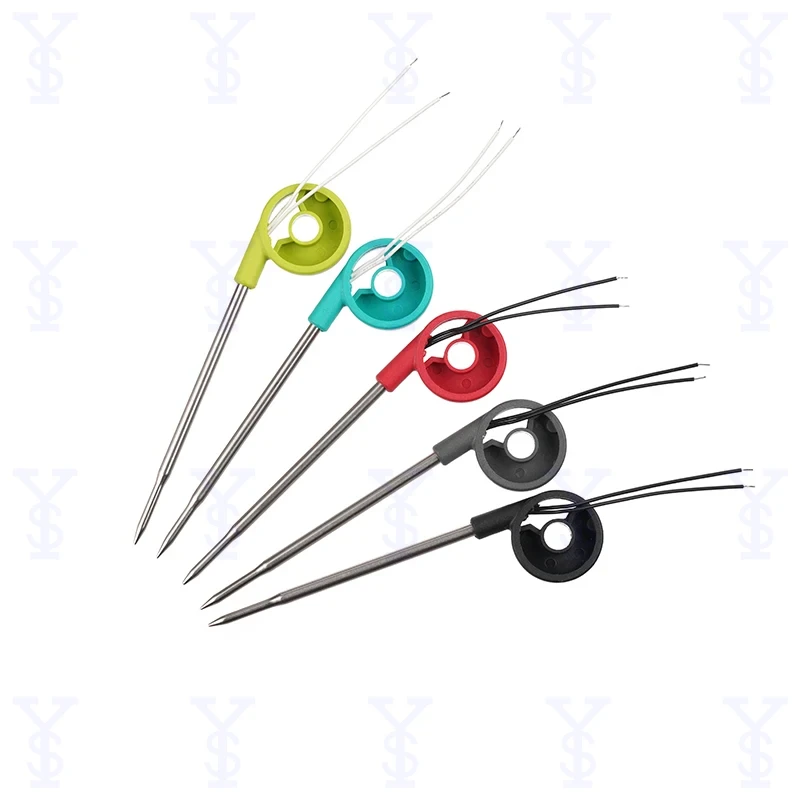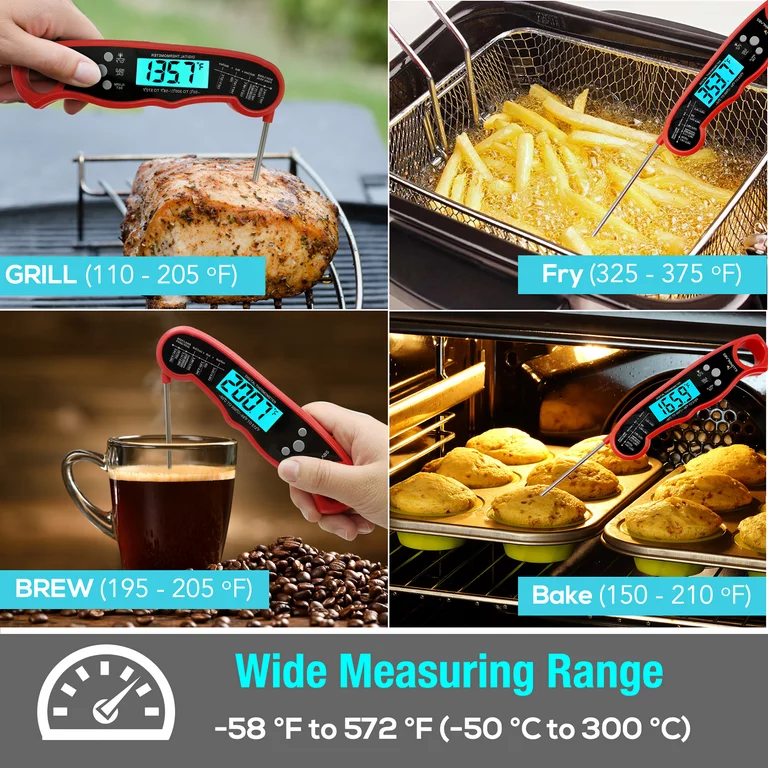Posta elektronikoaren formatuan errorea
emailCannotEmpty
emailDoesExist
pwdLetterLimtTip
inconsistentPwd
pwdLetterLimtTip
inconsistentPwd


The Culinary Thermometer: Unraveling Accuracy in Fahrenheit and Celsius
Accurate temperature control is essential in the realm of culinary arts, where even the slightest deviation can determine the success or failure of a dish. Whether you're a seasoned chef or a passionate home cook, precise temperature monitoring is crucial for achieving optimal results in your cooking and baking endeavors. One of the most trusted tools for this purpose is the food probe thermometer. But how accurate are these thermometers, and how do they measure up in both Fahrenheit and Celsius? Let's dive into the fascinating world of temperature measurement and find out.
Understanding Food Probe Thermometers
Before we can discuss accuracy, it's essential to understand what a food probe thermometer is and how it works.
What is a Food Probe Thermometer?
A food probe thermometer is a device used to measure the internal temperature of food. It consists of a probe that is inserted into the food and a display unit that shows the temperature reading.
How Do They Work?
The thermometer works by using a sensor, often a thermocouple, which generates a small voltage as a result of a temperature difference. This voltage is then converted into a temperature reading.
The Importance of Accuracy
Accuracy is paramount when it comes to food safety and achieving the desired texture and taste.
Food Safety
The internal temperature of cooked food is a critical factor in ensuring that harmful bacteria are destroyed. For example, poultry should reach an internal temperature of 165°F (74°C) to be considered safe to eat.
Cooking Results
Different dishes require different cooking temperatures to achieve the perfect texture and flavor. Accurate temperature readings ensure that your steak is cooked to your liking, whether that's rare, medium, or well-done.
Factors Affecting Accuracy
Several factors can influence the accuracy of a food probe thermometer.
Sensor Quality
The quality of the sensor used in the thermometer plays a significant role in its accuracy. High-quality sensors provide more precise temperature readings.
Calibration
Like any measuring tool, food thermometers can drift over time and may need calibration. This process involves adjusting the thermometer so that it provides readings that are consistent with a known reference point.
Environment
The environment in which the thermometer is used can also affect its accuracy. Factors such as extreme temperatures, humidity, and even altitude can influence readings.
Fahrenheit vs. Celsius: The Temperature Debate
The debate between Fahrenheit and Celsius is as old as the thermometer itself. Let's explore how these two scales impact the accuracy and use of food probe thermometers.
Fahrenheit
- Advantage: Used primarily in the United States, it's familiar to many home cooks and is often the standard in American recipes.
- Disadvantage: The scale is less evenly divided, which can make it harder to estimate temperatures between whole numbers.
Celsius
- Advantage: Used by the majority of the world, Celsius offers a more even division of temperature increments, making it easier to estimate and communicate precise temperatures.
- Disadvantage: May not be as familiar to users in countries that primarily use Fahrenheit, potentially leading to confusion.
Dual-Scale Thermometers
Many modern food probe thermometers offer dual-scale readings, displaying temperatures in both Fahrenheit and Celsius. This feature can be particularly useful for users who work with recipes in both scales or for those who are more comfortable with one scale over the other.
How to Ensure Accuracy
To get the most accurate readings from your food probe thermometer, follow these tips.
Regular Calibration
Regularly calibrating your thermometer ensures that it provides accurate readings. This process typically involves comparing the thermometer's readings to a known reference point and making adjustments as necessary.
Proper Use
Insert the probe into the thickest part of the food, avoiding bones and fat, to get an accurate reading of the internal temperature.
Pre-Heating
Allow the thermometer to pre-heat before taking a reading, especially when using it in a hot environment.
Post-Cooking Stability
Allow the food to rest for a few minutes after removing it from the heat source to ensure that the internal temperature stabilizes before taking a reading.
Advanced Features of Modern Thermometers
Modern food probe thermometers come with a variety of advanced features that can enhance their accuracy and usability.
Wireless Technology
Wireless food thermometers allow you to monitor the temperature from a distance, which can be particularly useful for grilling or roasting large cuts of meat.
App Integration
Some thermometers can connect to smartphone apps, providing real-time temperature readings and alerts when the desired temperature is reached.
Multi-Probe Capabilities
Advanced models may allow you to monitor the temperature of multiple types of food simultaneously, which is ideal for cooking large meals or hosting dinner parties.
Conclusion: The Role of Accuracy in Food Thermometry
The accuracy of a food probe thermometer is crucial for both food safety and culinary success. By understanding the factors that affect accuracy, choosing a high-quality thermometer, and using it correctly, you can ensure that every meal you prepare is cooked to perfection. Whether you prefer Fahrenheit or Celsius, or perhaps use both, having a reliable food probe thermometer is an indispensable tool in any kitchen.
Investing in Quality
Investing in a high-quality, accurate food probe thermometer is an investment in your culinary journey.
Continuous Learning
Stay informed about the latest advancements in food thermometer technology to make the most informed choices.
Embracing Precision
Embrace the precision that a good food probe thermometer offers to elevate your cooking and baking skills.
Final Thoughts
In the end, the choice between Fahrenheit and Celsius comes down to personal preference and familiarity. But regardless of the scale you use, the accuracy of your food probe thermometer is what will make the difference between a perfectly cooked meal and one that falls short. So, the next time you're in the kitchen, remember the importance of accurate temperature measurement and trust your food probe thermometer to guide you to culinary success.

